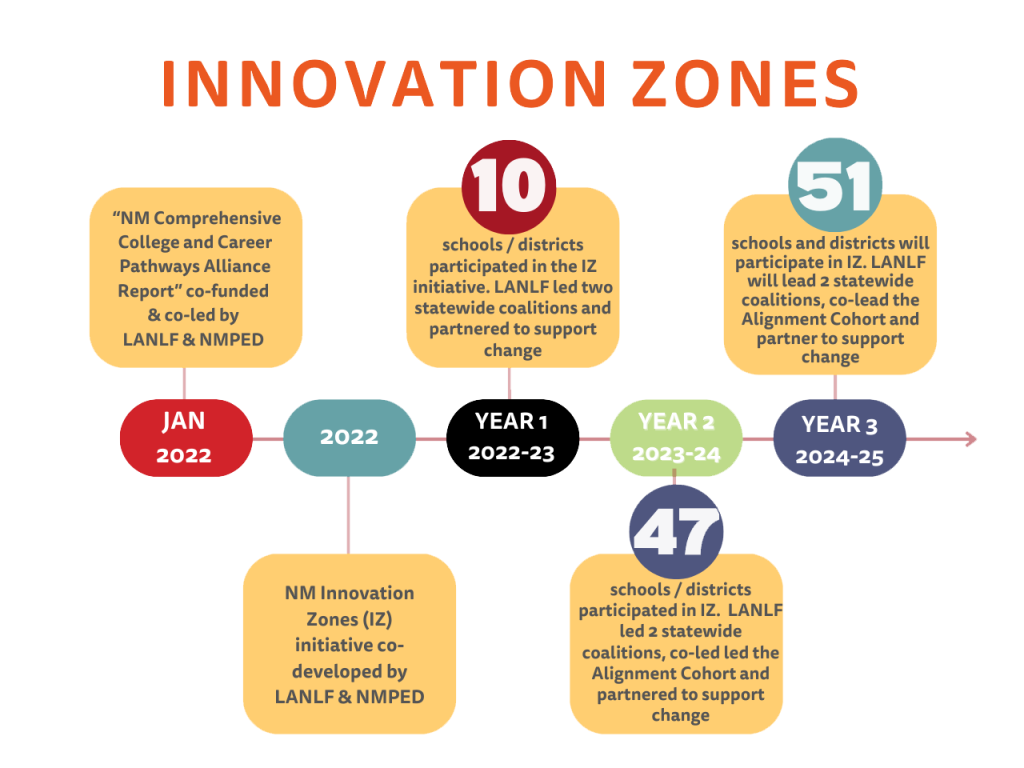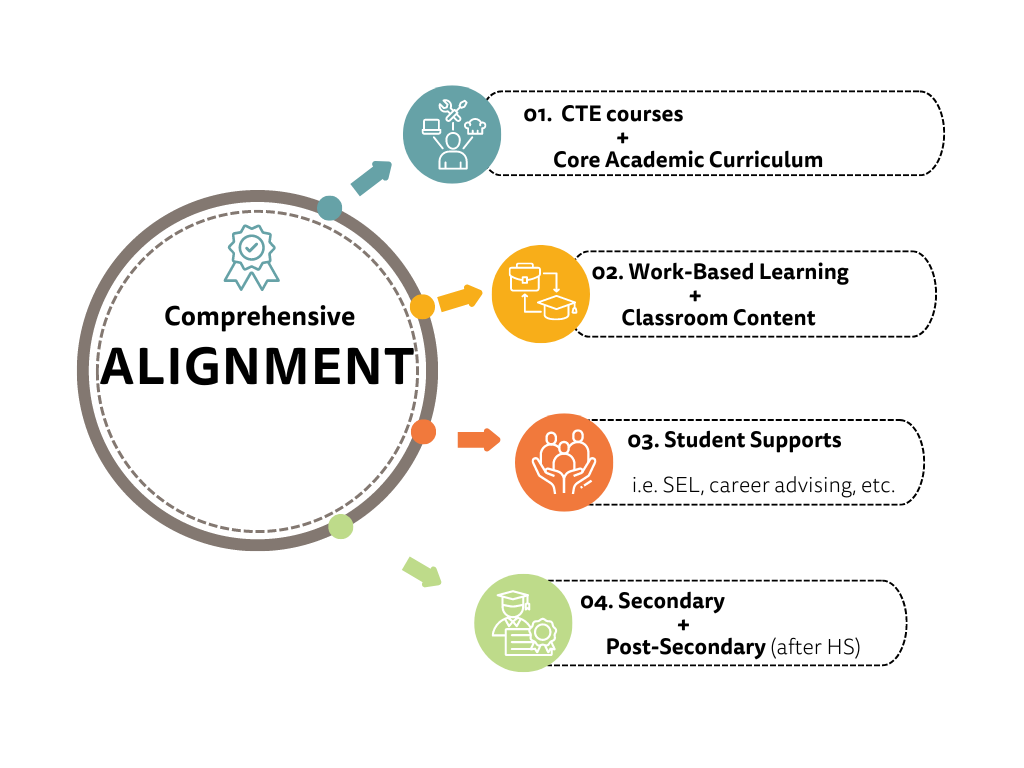New Mexico students deserve more opportunities. Our youth are deeply talented and ambitious but are underserved by an outdated, inequitable education system that has led to New Mexico having the highest rate in the country of 16-24-year-old youth who are not working or in school.
We urgently need culturally-responsive, student centered ways of re-engaging students inside and outside the classroom so they are prepared and inspired to thrive and care for their families and communities.


New Mexico Innovation Zones (IZ) Initiative
Our flagship project is the NM Innovation Zones Initiative. Our foundation is honored to have co-developed the NM Innovation Zones Initiative with the NM Public Education Department (NMPED) based on the January, 2022 “NM Comprehensive College and Career Pathways Alliance Report” that we also co-funded and co-led with the NMPED.
Since then, we’ve supported systemic changes at the high school, district and state levels to transform education with grassroots solutions using wisdom from local communities in partnership with NMPED, Future Focused Education, Ocotillo Strategies, NM State Center for Community Analysis, Social Emotional Learning Alliance for New Mexico, Parents Reaching Out, and the Region IX Education Cooperative.
The Six Essential Practices of Innovation Zones
1 Collaborative Leadership, Shared Power and Voice
2. Powerful Student and Family Engagement
3 Expanded, Enriched, and Relevant Learning Opportunities
4 Meaningful Community Connected Classroom Instruction
5 Integrated Systems of Support
6 Culture of Belonging, Safety and Care

The Impact of Innovation Zones for 2023-2024 School Year

How does it work?
New Mexico districts, schools and charter schools apply to be a part of the Innovation Zone Initiative in the Spring through the NM Public Education Department (NMPED).
After evaluation and approval by NMPED’s College and Career Readiness Bureau, there is funding and support for different approaches to education.


The preparation of NM students for college and career is most effective when CTE courses and core academic curriculum are integrated, work-based learning and classroom content are combined, student supports are provided and secondary and post-secondary are aligned with one another in a comprehensive approach and not as separate initiatives (Learning Policy Institute).
When aligned, field-based learning, in conjunction with college prep or a technical core and individual support services, will deepen students’ understanding of academic and technical knowledge to succeed in both college and career (Beyond Tracking). Using this approach, the classroom experience is transformed while students gain opportunities to develop high-level cognitive skills in the core academic disciplines grounded in academic and real world standards (Learning Policy Institute).
Examples of Alignment
1 Integrating CTE courses into the curriculum through team and project-based teaching approaches.
2 Redesigning course schedules to offer aligned sequences and topical courses.
3 Combining classroom instruction with work-based learning by developing a campus lab initiative, which integrates student learning opportunities into school campus improvement / expansion projects.
(Examples from the NM Comprehensive College and Career Pathways Alliance Report)
_______________________________________
New Mexico’s Alignment Cohort
“I am more aware of the importance of aligning WBL and core academics and having a common vision amongst all stakeholders. We narrowed down our pathways to 4 and hope to create a more aligned program with our core subjects and CTE courses.”
-2023-2024 Program Participant
Student Impact of Alignment
Students are better prepared to succeed in college, career, and life using the comprehensive alignment approach compared to peers in traditional high school programs.
From a five-year study, students who participated in the aligned approach:
- Earned 8.9 more credits in high school
- Were 2.1% points less likely to drop out before 12th grade
- Were 3.1% points more likely to graduate high school
- English language learners were 2.8 percentage points less likely to drop out, and earned an average of 11.7 more credits.
- Students with low achievement scores in earlier grades made significant progress when they participated in the aligned approach.
(Data from Connect ED and Linked Learning Alliance).

